Today Current Affairs: 14th August 2021 for UPSC IAS exams, State PSC exams, SSC CGL, State SSC, RRB, Railways, Banking Exam & IBPS, etc
Table of Contents
Fit India Freedom Runs 2.0:

Union Minister of Youth Affairs & Sports will launch the Nationwide programme of Fit India Freedom Runs 2.0 as part of Azadi ka Amrit Mahotsav on 13th August 2021 from Major Dhyan Chand National Stadium, New Delhi.
- Along with Delhi Fit India Freedom Runs 2.0, programme will be organised in 9 other iconic locations across the country.
- Each week programmes will be held in 75 districts and at 75 villages in each district till 2nd October 2021.
- Thus, Fit India Freedom Runs will be organized in 744 Districts, 75 villages in each of the 744 Districts and 30,000 Educational Institutions across the country.
- The aim of the campaign is to encourage people to take up fitness activities such as running and sports in their daily lives and get freedom from obesity, laziness, stress, anxiety, diseases etc.
- Through this campaign, citizens will be given call to make a resolve to include physical activity of at least 30 minutes daily in their lives “FITNESS KI DOSE AADHA GHANTA ROZ”.
- The key activities of Fit India Freedom Run 2.0 include pledge, rendering of National Anthem, Freedom Run, cultural functions at venues, awareness among Youth Volunteers to participate and also organize similar Freedom Runs in their villages.
- ‘Fit India Freedom Run’ was conceived last year in the wake of COVID-19 Pandemic when social distancing became ‘new normal lifestyle, so as to keep the imperative need of fitness active even while following the social distancing norms.
- The first edition of the campaign was organized from 15th August to 2nd October, 2020.
UNSC Meet On Maritime Security:

The United Nations Security Council (UNSC) has adopted the first-ever presidential statement on maritime security.
- India, as the UNSC president for August 2021, noted the threats to maritime safety and security and called upon the members to consider implementing the 2000 UN Convention against Transnational Organized Crime.
- All the permanent members of UNSC (US, China, Russia, UK and France) attended the Meet.
Statement on Maritime Security:
- Emphasized on safeguarding the legitimate uses of the oceans and security of coastal communities, affirming that international law — reflected in the 1982 United Nations Convention on the Law of the Sea, among other global instruments — provides the legal framework for combating these illicit activities.
- Called on Member States to implement the International Ship and Port Facility Security Code and Chapter XI-2 of the International Convention for the Safety of Life at Sea, and to work with the International Maritime Organization (IMO) to promote safe and secure shipping while ensuring freedom of navigation.
- Member States, by other terms, should also consider ratifying, acceding to and implementing the 2000 United Nations Convention against Transnational Organized Crime and the Protocols thereto.
India’s Stand:
- India has put forth five basic basic principles for maritime security.
- Free maritime trade sans barriers so as to establish legitimate trade.
- In this context, SAGAR (‘Security and Growth for all in the Region’) vision can be highlighted.
- Settlement of maritime disputes should be peaceful and on the basis of international law only.
- It was with this understanding, and maturity, that India resolved its maritime boundary with its neighbour Bangladesh.
Responsible maritime connectivity should be encouraged. - Making reference to China’s Belt and Road Initiative, India held that, while creating structures for “maritime connectivity”, countries should keep “financial sustainability” and absorption capacity of the host countries.
- Need to collectively combat maritime threats posed by non-state actors and natural calamities.
- Highlighting India’s role in the Indian Ocean has been that of a net security provider.
- Preserve the maritime environment and maritime resources.
- Highlighting increasing pollution from plastic waste and oil spills
Open Acreage Licensing Programme:
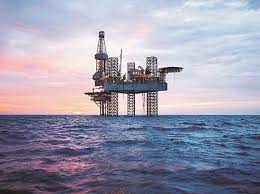
In an attempt to boost domestic hydrocarbon production, the petroleum and natural ministry launched the sixth bid round under the liberal Open Acreage Licensing Programme (OALP).
- Earlier, the Cabinet Committee on Economic Affairs (CCEA) approved the Policy framework on reforms in the exploration and licensing sector for enhancing domestic exploration and production of oil and gas.
- The Hydrocarbon Exploration and Licensing Policy (HELP) replacing the erstwhile New Exploration Licensing Policy (NELP) was approved in March 2016 and the Open Acreage Licensing Policy (OALP) along with the National Data Repository (NDR) were launched in June 2017 as the key drivers to accelerate the Exploration and Production (E&P) activities in India.
- Under OALP, companies are allowed to carve out areas they want to explore oil and gas in.
- Companies can put in an expression of interest (EOI) for any area throughout the year but such interests are accumulated thrice in a year.
- The areas sought are then offered for bidding.
- This policy is different from the past where the government identified areas and offered them for bidding.
- India is one of the fastest growing major economies in the world and the third largest consumer of petroleum products after the US and China.
- India is heavily dependent on import of crude oil to meet its energy needs.
- Net imports of crude oil have increased from 111.50 metric tons during 2006-07 to 202.85 metric tons during 2015-16.
- In this backdrop, India has set a target to reduce dependence on crude oil imports by 10% by 2022.
Sanctions On Belarus:

The UK, the US and Canada have issued fresh trade, financial and aviation sanctions on Belarus, in a bid to increase pressure on the country’s leader Alexander Lukashenko.
- Europe’s longest-serving ruler, President of Belarus (Lukashenko) took office in 1994 amid the chaos caused by the collapse of the Soviet Union in 1991.
- Often described as Europe’s “last dictator”, he has tried to preserve elements of Soviet communism.
- He has been in power for 26 years, keeping much of the economy in state hands, and using censorship and police crackdowns against opponents.
- In 2020, after Lukashenko was announced as the winner in elections, protests broke out in the capital, Minsk which were met with a violent security crackdown.
- There has been widespread anger against the government over a stagnant economy and doubts about the fairness of the election.
Sanctions’ Targets:
- The idea is to focus on the regime and Lukashenko’s associates as precisely as possible and discourage Western companies from doing business with Belarus.
- The latest sanctions restrict exports of surveillance and military technology to Belarus.
- The sanctions partially ban imports of potash fertilizer, petrol and petrol-based products from Belarus.
- In the cases of the EU, U.K. and Canada, the embargo also restricts financial trade such as buying state debt and insuring or reinsuring state-related entities.
- The EU and US have sanctioned Belarus’ tobacco industry, which contributes to the lucrative cigarette smuggling trade.
- More than 90% of cigarettes smuggled into Lithuania came from Belarus in 2019.
- Western countries also blacklisted some Belarusian citizens.
Impacts:
- Targeting Belarus’ potash sector was a strategic move insofar as the country is the second largest exporter of the fertilizer behind Canada, covering 21% of the world’s potash exports in 2019.
- But, sanctions cover only 15% of all potash exports to the EU.
- Also, Russia represents 49.2% of all Belarusian trade and Belarus can export its sanctioned goods across the Russian border for re-export from there.
- The impact of restrictions on dual-use goods, monitoring and interception goods and technology, and goods used in cigarette manufacturing would be negligible.
Minority Schools In The Country:
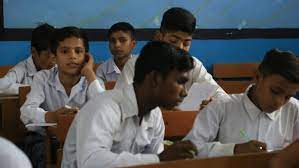
The National Commission for Protection of Child Rights (NCPCR) has released a report assessing minority schools in the country. The report has analysed the impact of exemptions provided to Minority institutions under Article 15(5).
- Article 15(5) empowers the country to make reservations with regard to admissions into educational institutions both privately run and those that are aided or not aided by the government. From this rule only the minority run institutions such as the Madarsas are exempted.
- Minority schools are exempted from implementing The Right to Education policy and do not fall under the government’s Sarva Shiksha Abhiyan.
- In 2002, the 86th Amendment to the Constitution provided the Right to Education as a fundamental right.
- The same amendment inserted Article 21A, which made the RTE a fundamental right for children aged between six and 14 years.
- The passage of the amendment was followed by the launch of the Sarva Shiksha Abhiyan (SSA) that aimed to provide “useful and relevant, elementary education’’ to all children between six and 14 years.
- In 2006, the 93rd Constitution Amendment Act inserted Clause (5) in Article 15 which enabled the State to create special provisions, such as reservations for advancement of any backward classes of citizens like Scheduled Castes and Scheduled Tribes, in all aided or unaided educational institutes, except minority educational institutes.
- The Commission is of the view that the two different sets of rules Article 21A that guarantees fundamental right of education to all children, and Article 30 which allows minorities to set up their own institutions with their own rules and Article 15 (5) which exempts minority schools from RTE creating a conflicting picture between fundamental right of children and right of minority communities.
All India Elephant And Tiger Population Estimation Exercise:

All India Elephant and Tiger population estimation exercise to be done in convergence for the first time in 2022.
- Minister for Environment released the population estimation protocol to be adopted in the exercise to be taken up for the All India elephant and tiger population estimation in 2022.
- The protocol was released on the occasion of World Elephant Day.
- The programme also witnessed release of the fourth edition of the quarterly newsletter “Trumpet” of the Elephant Division of the Ministry.
- Asian elephants are listed as “Endangered” on the IUCN Red List of threatened species.
- Indian Elephant has also been listed in the Appendix I of the Convention of the Migratory species in the recently concluded Conference of Parties of CMS 13 at Gandhi Nagar, Gujarat in February 2020.
GSLV-F10 Launch And EOS-03 Satellite:
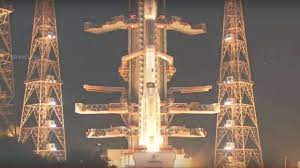
The launch of earth observation satellite EOS-03 onboard GSLV-F10 was unsuccessful recently because of an anomaly in the rocket’s cryogenic upper stage.
- GSLV-F10 was ISRO’s eighth flight with indigenous cryo, 14th GSLV flight and 79th launch from Sriharikota.
- EOS-3 was the first state-of-art agile Earth Observation Satellite which would have been placed in a geo-synchronous orbit around the Earth.
- It was expected to provide near real-time imaging, which could be used for quick monitoring of natural disasters, episodic events and any short-term events.
- The mission life of the satellite was 10 years.
- The GSLV is geosynchronous satellite launch vehicle.
- The GSLV Mark II is the largest launch vehicle built by India.
- As its name suggests, it can launch satellites that will travel in orbits that are synchronous with the Earth’s orbit.
- These satellites can weigh up to 2,500 kg and are first launched into transfer orbits that have a distance from Earth of 170 km at closest approach and about 35,975 km at furthest approach which is close to the height of the geosynchronous orbit.
Al-Mohed Al-Hindi 2021 Exercise.:
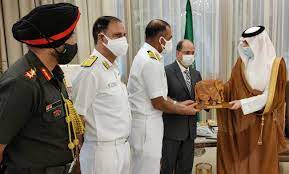
India and Saudi Arabia are conducting their first-ever naval exercise, in reflection of their growing defence and military cooperation.
- Indian Navy’s guided-missile destroyer INS Kochi reached the Jubail port in Saudi Arabia for the “Al-Mohed Al-Hindi 2021” exercise.
- The harbour phase of the “Al-Mohed Al-Hindi 2021” exercise began with the sea-based drills taking place subsequently.
- The exercise is taking place amid rising tension in the Gulf region after a drone attack on a merchant tanker off Oman killed a British national and a Romanian citizen over a week back.
Sovereign Right To Taxation:
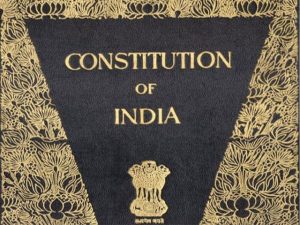
While scrapping the retrospective levy is believed to provide clarity to investors by removing a major source of ambiguity on taxation laws, the Government of India has stressed the need to establish its “sovereign right to taxation”.
- In India, the Constitution gives the government the right to levy taxes on individuals and organisations, but makes it clear that no one has the right to levy or charge taxes except by the authority of law.
- Any tax being charged has to be backed by a law passed by the legislature or Parliament.
- A tax “is not a voluntary payment or donation, but an enforced contribution, exacted pursuant to legislative authority”.
- Taxes in India come under a three-tier system based on the Central, State and local governments, and the Seventh Schedule of the Constitution puts separate heads of taxation under the Union and State list.
- There is no separate head under the Concurrent list, meaning Union and the States have no concurrent power of taxation.
Poly Network:

Hackers pulled off the biggest ever cryptocurrency heist, stealing $613 million in digital coins from token-swapping platform Poly Network, only to return $260 million worth of tokens less than 24 hours later
- Poly Network is a decentralized finance (DeFi) platform that facilitates peer-to-peer transactions with a focus on allowing users to transfer or swap tokens across different blockchains.
- For example, a customer could use Poly Network to transfer tokens such as bitcoin from the Ethereum blockchain to the Binance Smart Chain, perhaps looking to access a specific application.
- Poly Network was launched by the founders of Chinese blockchain project Neo.
- Poly Network operates on the Binance Smart Chain, Ethereum and Polygon blockchains.
- Tokens are swapped between the blockchains using a smart contract which contains instructions on when to release the assets to the counterparties.




